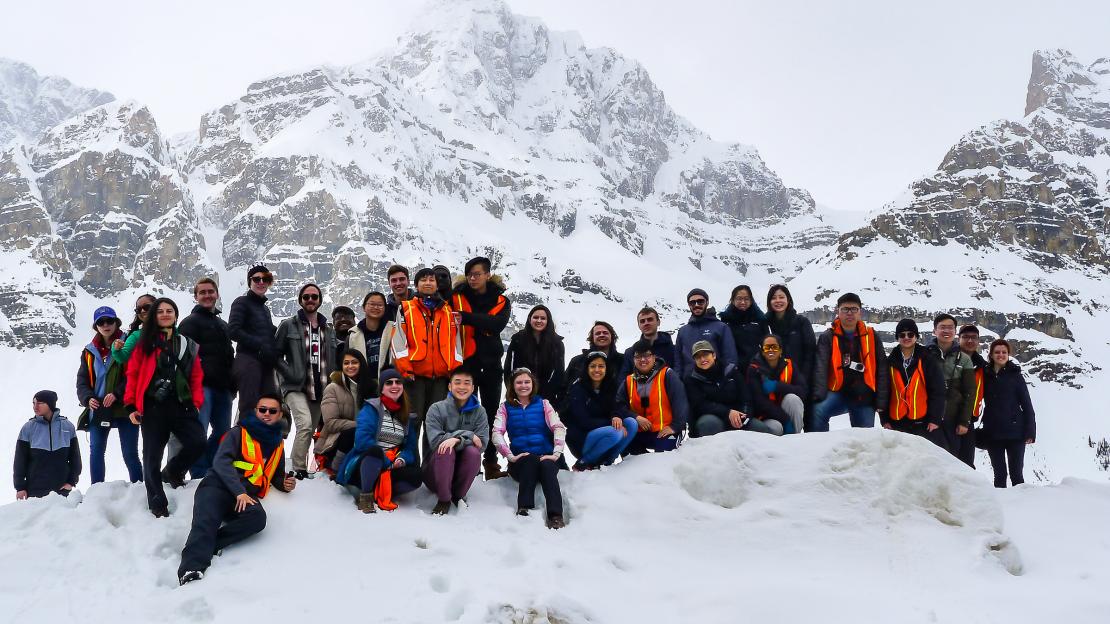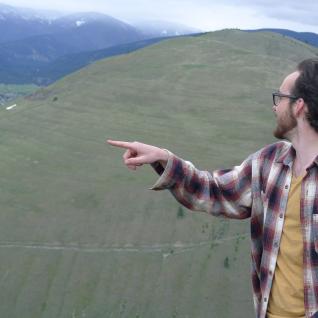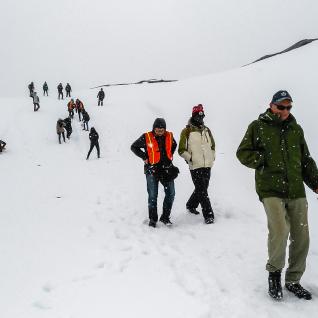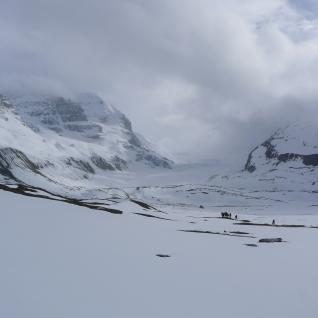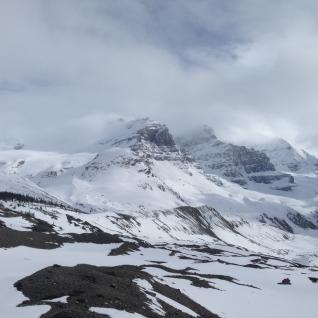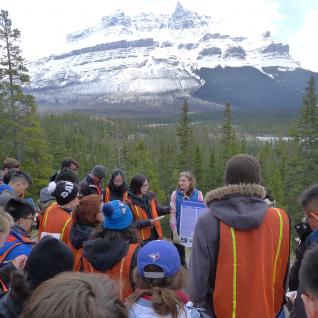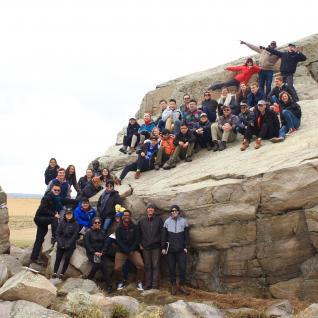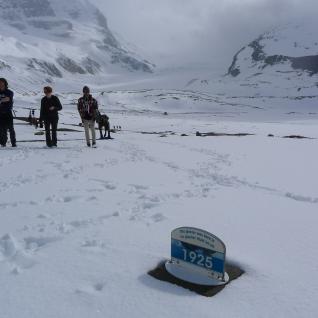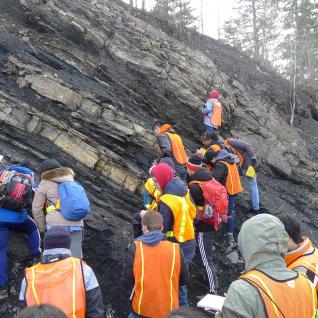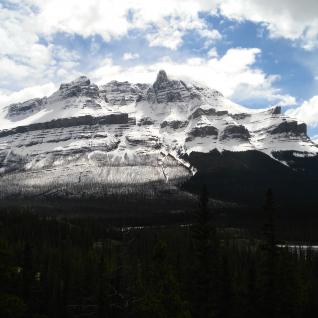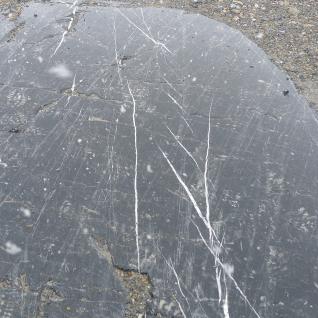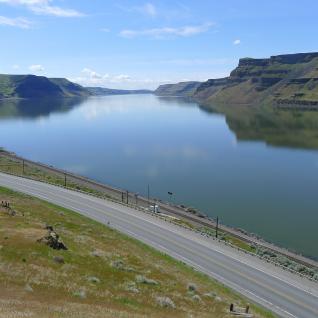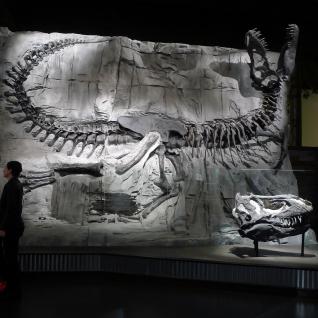It’s not every day that students get a chance to hike a mountain in the Rockies to watch the sun rise through the clouds or trek to the foot of a massive glacier, all while earning a course credit.
But for a group of 34 U of T Scarborough Environmental Science students this past summer they got to do just that.
“A lot of geology is done in the field, but for most undergrads, their experience comes from classroom work,” says Professor Nick Eyles of the Department of Physical and Environmental Science, and course instructor for EESC16H3 Field Camp I.
“This course offers another dimension by taking them out into the field in a big way.”
EESC16H3 is a field course that involves a ten-day trip to significant geological sites across areas of North and Central America. In past years the field camp has taken students to Costa Rica, Arizona, across the Appalachian Mountains, while a perennial favourite is Iceland. This year it was the Canadian Rockies and Pacific Northwest of the United States and Canada.
After landing in Calgary students and instructors boarded a bus to Drumheller to visit the Tyrrell Museum of Paleontology in Alberta’s Red Deer Valley, famous for its research on dinosaurs. In Calgary, they also experienced the province’s Core Research Facility where oil companies store hundreds of kilometres of drill core. Students did a lab exercise to determine the paleoenvironments in which 200-million-year-old rocks have been deposited. Eyles says the techniques are used to map oil and gas reservoirs deep underground, and are also used in Ontario to find groundwater.
Students also visited the Athabasca glacier in the Canadian Rockies north of Banff to look at the impact climate change is having on the ice fields and water resources of western Canada. The bus then went south across the border to Missoula, Montana, before going to the Channeled Scablands in eastern Washington State and then across the Columbia Plateau to Mt. St. Helens near Seattle. The trip ended in Vancouver, where geologists predict a major earthquake will eventually take place.
A unique aspect of the course is that during the trip students do a poster presentation in front of a significant geological site.
“One group did their presentation on the hydrology of the Banff hot springs,” says Raymond Co, a fourth-year geosciences student who plans to pursue a career in hydrology. “It was incredible to see my classmates describing the science behind the spring as the heat and be able to see steam from the spring rising above at the same time.”
In addition to visiting unique geological sites, students also get a taste of what it’s like to do research in the field. They’re expected to use instruments to measure the slope, dip and orientation of rock outcrops to figure out the type. This helps them figure out how the rock formed and the type of minerals it may contain.
“Being outside every day and experiencing field work is really important, especially for those looking for careers in the field” says Talin Atikian, a fourth-year geosciences specialist.
“I’m a tactile learner, so feeling and experiencing firsthand the knowledge we’re learning really helped me connect the dots.”
Eyles, who has been teaching the course since 1985, says it has grown a lot from only three students when it first started.
“When Principal Kidd recently visited Vancouver to meet with alumni, some remembered the course vividly, saying it was one of the highlights of their undergrad. Lifelong friendships have been formed, and even some couples met for the first time on these field camps.”
It’s also begun to attract students outside the geosciences like Sophia Elisseeva, a fourth-year molecular biology specialist. Elisseeva took Introduction to Planet Earth (EESA06) and has always been interested in rocks and fossils. What really stood out for her from the course was the physical work geologists have to put in.
“Geologists often have to work in unpredictable weather and a harsh environment, but they also get to explore the natural world and figure out how it evolved and continues to evolve,” she says.
She adds putting in a bit of physical work can yield some memorable results, like what a group of her classmates experienced one early morning in Canmore, Alberta.
“It was 5 a.m. and a group of us decided to hike up a mountain to watch the sunrise,” she says. “Witnessing the sun break through the clouds and the snow glistening on top of a mountain is something I will never forget.”
